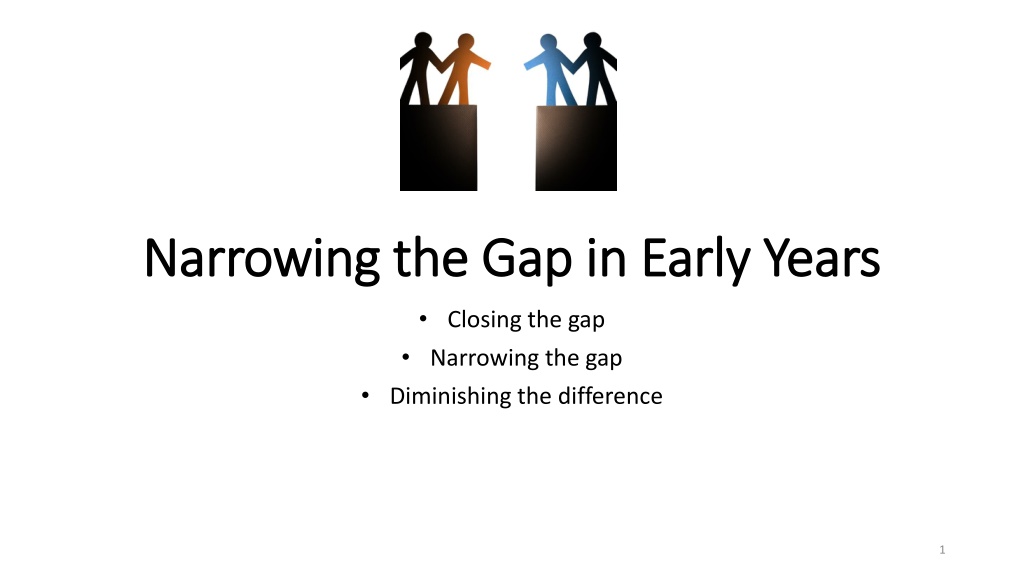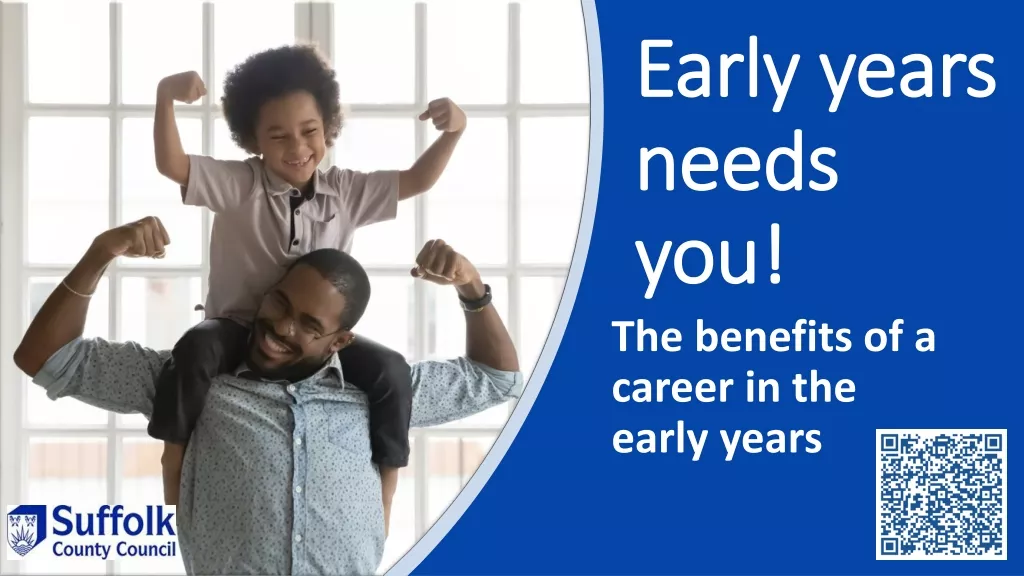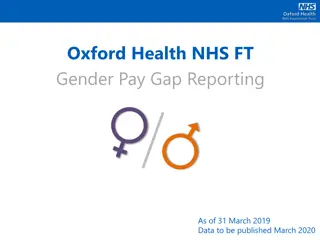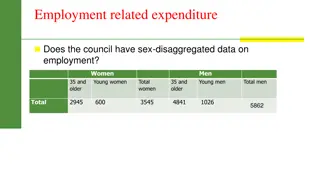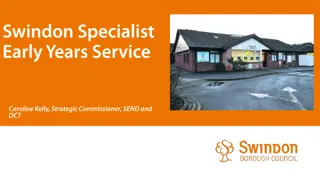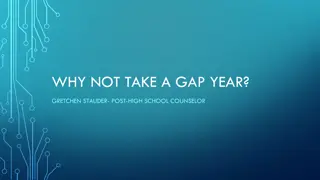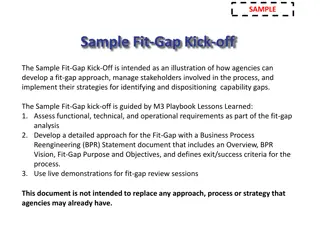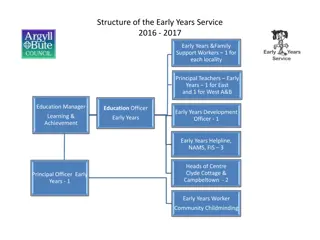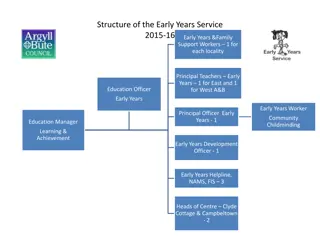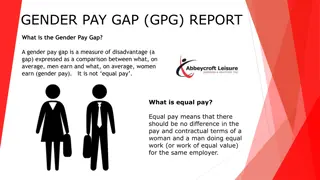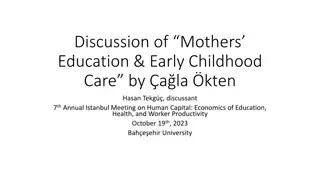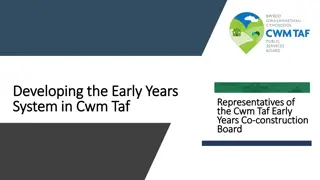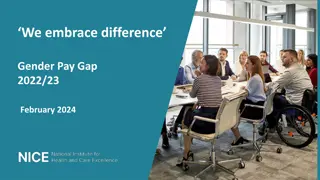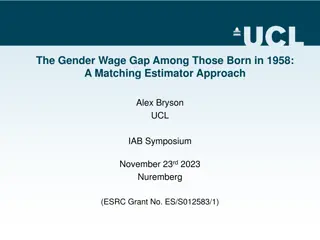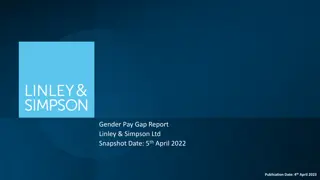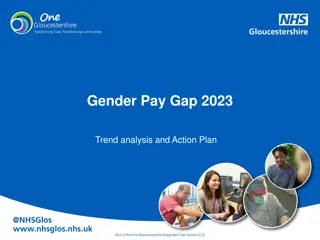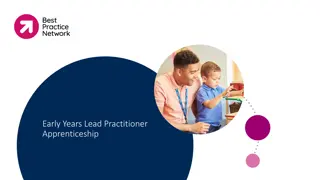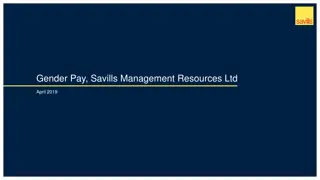Addressing the Gap in Early Years Education
Exploring the persistent gap in early years education, this content delves into the challenges faced by children in various groups such as gender, ethnicity, disadvantaged backgrounds, and age. It emphasizes the importance of identifying key areas for development and barriers hindering the closing of the gap. Insights from Ofsted on intent, implementation, and impact shed light on how schools can prepare children effectively for their educational journey.
Download Presentation

Please find below an Image/Link to download the presentation.
The content on the website is provided AS IS for your information and personal use only. It may not be sold, licensed, or shared on other websites without obtaining consent from the author.If you encounter any issues during the download, it is possible that the publisher has removed the file from their server.
You are allowed to download the files provided on this website for personal or commercial use, subject to the condition that they are used lawfully. All files are the property of their respective owners.
The content on the website is provided AS IS for your information and personal use only. It may not be sold, licensed, or shared on other websites without obtaining consent from the author.
E N D
Presentation Transcript
Narrowing the Gap in Early Years Narrowing the Gap in Early Years Closing the gap Narrowing the gap Diminishing the difference 1
Where Where is the gap ? Although more children are getting GLD, the gap has stopped being narrowed for most groups. Gender Ethnicity Disadvantaged Age Implications: Key stage 1, Key stage 2, 3 and beyond. 2
What What is the gap? Let s unpick what this means Brainstorm 3
A clear understanding of what the gap is and your intention, implementation and impact around it. The content of your school s Curriculum will help to address this. Needs to be beyond Early Years Outcomes and GLD descriptors. As a school, what have you identified as key areas for development in what have you identified as key areas for development in order to address the gap? Have you identified key themes , characteristics and barriers that are preventing the closing of the gap? 4
What does Ofsted say? Intent, implementation, impact In particular, inspectors will evaluate how well: leaders assure themselves that the setting s curriculum (educational programmes) intentions are met and it is sufficiently challenging for the children it serves leaders use additional funding, including the Early Years Pupil Premium where applicable, and measure its impact on disadvantaged children s outcomes practitioners ensure that the content, sequencing and progression in the areas of learning are secured and whether they demand enough of children children develop, consolidate and deepen their knowledge, understanding and skills across the areas of learning . The provider s curriculum prepares children for their next stage. 5
THE WORD GAP THE WORD GAP (Our school focus) (Our school focus) Government has shared concerns about the persistent scandal of children starting school unable to communicate in full sentences or read simple words Because when you re behind from the start you rarely catch up, because, of course, your peers don t wait, the gap just widens and this has a huge impact on social mobility. Government data indicates that 28% of four- and five-year-olds do not meet expected communication and literacy levels by the end of reception. (DfE, 2018) Language variation in children is complex and difficult to attribute to a single cause. Regardless of the causes, low levels of vocabulary set limits on literacy, understanding, learning the curriculum and can create a downward spiral of poor language which begins to affect all aspects of life. 6
Language opens doors. It unlocks the world of reading and the imagination, and the excitement of writing. It builds the capacity to explore new subjects. It releases our potential to learn and grow as an individual. In schools, it underpins progress and impacts on attainment. Throughout school, it affects self-esteem and behaviour, and plays a huge role in a child s future life chances. Poor vocabulary the word gap leaves too many children seriously limited in their enjoyment of school and success beyond. So, addressing the Word Gap will in itself address gaps in attainment in all 17 areas of learning and beyond 7
An example of Word Gap Recycling landfills fairness pollution at 4 How did she access all that knowledge and skills at 4? Who enabled her? What s her next steps? What about a child who doesn t come in with this knowledge, skills and input? 8
How will you address the word gap? So, what is your intent on addressing the word/vocabulary gap- needs to be a whole-school approach with early years involved. Brainstorm ideas about your intent, implementation, impact for the word gap. How are you different from other schools(remember, you have different demographic, different children, different staff, different vision/ethos ) 9
What we can do How are you doing it? How is this impacting the word gap? Engage parents in a reading culture Train staff to become reading advocates Develop the reading environment Build on time to read in school Use a wide range of reading materials Introduce and explore challenging vocabulary Read aloud, clearly, expressively 10
What we can do How are you doing it? How is this impacting the word gap? Use original and active ways to learn words Create, share, display vocabulary Collaborate in class writing activities Model and scaffold precise use of words Expect children to answer in full sentences Explore different tiers of vocabulary Create environments that encourage talk Enable and expect adults to be excellent models for talk Allow children time to talk and time to get a model reply Use ways to explore the same word in different contexts 11
What we can do How are you doing it? How is this impacting the word gap? Engage parents in a reading culture Book Bag Club- weekly Bug Club Book Week Stay and Read Library prizes Book Swap Workshops Summer reading challenge Reading given greater profile when engaging parents. Parents supported with their own reading (Book Bag Club) . Children are learning to decode at a much faster rate and are able to then work around understanding the words they read. This enables them to access that vocabulary and use it in their talk too. Holiday pictures of reading in different places (staff included) Mrs Ali is reading display. One teacher responsible for promoting reading, such as clubs, working with parents on initiatives Train staff to become reading advocates Everyone is a reading advocate. Reading given greater profile when engaging parents and children. Build on time to read in school DDR Reading Buddies with Key Stage 1 Children are learning to decode at a much faster rate and are able to then work around understanding the words they read. This enables them to access that vocabulary and use it in their talk too. 12
What we can do How are you doing it? How is the impacting the word gap? Use a wide range of reading materials Resources used to reflect demographic children (e.g. EAL -may need books that might more accessible as well as more abstract concepts ) Children are learning to decode at a much faster rate and are able to then work around understanding the words they read. This enables them to access that vocabulary and use it in their talk too. Read aloud, clearly, expressively Training given to adults. Monitoring adults continuously with this. Storytime-chosen books, accessible to all Reader s Theatre Talk for Writing Storytelling carpet Children using modelled vocabulary in their talk and writing. 13
What we can do How are you doing it? How is the impacting the word gap? Use original and active ways to learn words Planned vocabulary. Curriculum has planned vocabulary and progression throughout year groups. Reception is included in this. Use Widgit (communcation4All) program to add symbols, use actions to recall words. Use colour to identify phonemes. Use home language to translate (orally). Use practical situations to make children understand the word (e.g. accurately ) Clear progression in vocabulary used. All adults (including parents) aware of key vocabulary being introduced. More children able to access planned vocabulary, hence narrowing the gap. Create, share, display vocabulary Word Walls accessible throughout class. High frequency words, topic words, wow words reinforced daily. Vocabulary at child height so accessible to them. All children accessing the words and using them in spoken and written forms. Collaborate in class writing activities Shared Writing, modelled writing, finished product Children able to access vocabulary at different levels. Able to rehearse and follow models of using written versions of the spoken words used in class. Gap between writing attainment narrowed. Model and scaffold precise use of words Word used in many different contexts (words can have more than one meaning- e.g. nail in Titch story). All adults aware of key words that need to be reinforced and used in context (e.g. in role play, modelling, feedback) Repetition and clarification allows children to understand meanings and embed knowledge of words. 14
What we can do How are you doing it? How is the impacting the word gap? Expect children to answer in full sentences Planning time to do this. Expecting all adults to be aware of this. Using actions to reinforce this Planning incorporates words which will aid use of super sentences (e.g. because ) Rehearsing sentences and speaking in sentences allowing children to access more complex vocabulary. Explore different tiers of vocabulary Said ,shouted ,cried ,exclaimed (BUT being aware that children need to understanding the more complex version through modelling and experiencing) Children exposed to a range of vocabulary, modelled and experienced . Create environments that encourage talk Playground- encouraging children to resolve issues I Statements Role play-specific to theme/book- enabling situations where they need to explore the same words (e.g. old woman needs to measure her ingredients accurately. Send child into role play area to check if she is doing it accurately- the word is used and heard again and again) Storytelling Chair Children using modelled language in talk and beginning to use it in writing too. Enable and expect adults to be excellent models for talk TA training at during staff inset every term to reinforce this. Monitoring adults, incorporating as part of Professional development. New adults trained asap. Modelling from adults helping children to refine own sentence structure and vocabulary. Using and applying new words on a daily basis. 15
What we can do How are you doing it? How is the impacting the word gap? Allow children time to talk and time to get a model reply Ta training at during staff inset every term to reinforce this. Monitoring adults, incorporating as part of Professional development. New adults trained asap. Modelling correct use of past tense by saying back sentence but also creating new sentences with the same word. Modelling from adults helping children to refine own sentence structure and vocabulary. Using and applying new words on a daily basis. Use ways to explore the same word in different contexts E.g. sort used in lots of different contexts . Children encouraged to used in correct and varied contexts Modelling and contextualising from adults helping children to refine own sentence structure and vocabulary. Using and applying new words on a daily basis. 16
What could you do even better? When will you do this? 17
